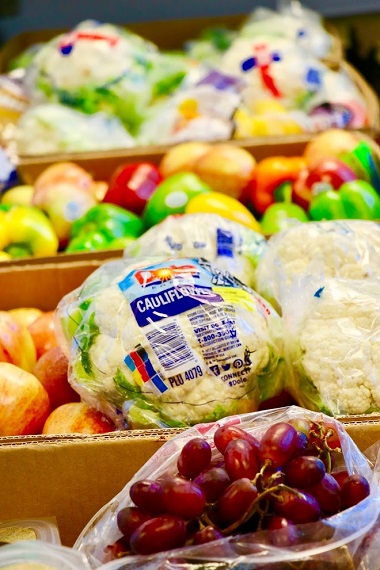
Damaged or otherwise imperfect food donations from the grocery store.
I didn’t grow up in the grocery business and was shocked by the readiness at which perfectly good food was thrown away without a second thought. It seemed to be morally outrageous as well as bad business.
I’d been raised in families, schools and communities that were careful to reduce, reuse and recycle wherever possible. My grandparents were from the post-war generation and so wasting food (or anything else) at home was simply not acceptable. Goods purchased had value and were to be used entirely, and for the long term.
It seems that for a while in Canada those wartime values were lost as food and goods became cheaper; their value declined as did their price.
We now find ourselves ranked only behind the United States as the world’s largest waster of food, throwing away a shocking 396 kilograms per capita, costing the country an estimated 30 billion dollars annually. That’s 873 lbs for those of you who haven’t made the jump to the metric system.
That’s a disgusting number, in imperial or metric.
After my first week working at our brand new store, that was fully stocked but void of customers, I saw first hand the cost that beautiful, full, fresh displays had when you have no customers buying any of it. Business was slow at first. The scale of it all absolutely shocked me, as I’m sure it would you. Wilted kale, bruised apples, soft tomatoes and anything else past its marked “Best before date” filled our dumpsters, day in and day out.
As a family who got involved in the food business for their love of food and the value they saw in it, this was soul crushing. This was not what we had signed up for.
If we were anything like a typical grocery store in our first year, I’d conservatively estimate that we threw away well over $100,000 worth of food – most of which was damaged or close dated but entirely edible.
Thankfully, in the years that followed we learned much about ordering, purchasing, pricing and “dumbing up” displays so that they’d appear full while only bringing in the amount we would actually sell. This reduced waste and offered fresher daily produce. In short, we had learned how to run our business, reduce inventory and dramatically increase efficiency.
With time our business grew and our waste became much more manageable but still accounted for a huge amount of perfectly good food that simply wasn’t fit for our retail shelves. Our family lived on this “waste” and so did our staff. Still, there was more.
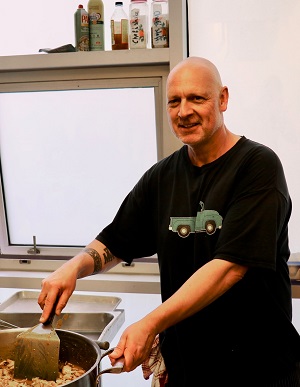
Chef Hannes Tischhauser at work.
After years of trying to donate our imperfect food to numerous charitable organizations without much success, in 2014 we finally found our man. He was a dedicated international chef named Hannes Tischhauser. Chef Hannes is the founder of Soulkitchen, an organization with the stated goal of creating “healthy and vibrant communities by welcoming the marginalized and lonely to the table and into the kitchen.”
This guy talked the talk and walked the walk. He carried a steadfast conviction to do good work for his community, save perfectly usable food from the trash and teach others to follow his example. Hannes has been transforming our food waste issue into a powerful story of community empowerment, selfless giving and personal transformation for nearly four years now.
I’ve seen Hannes each morning while he picks up from our store and we’ve become friends, exchanging stories and getting to know one another. But, embarrassingly, I had never seen his program first hand. That was finally about to change.
Hannes, his sous chef Hannah, his volunteers and the tenants who use his program were gracious enough to let me spend a day beside them learning about how it all works – where our food ended up.
Five days a week Hannes arrives just after our morning cull has been completed and we’ve pulled down all the damaged or close dated fresh produce, meats, baked goods and dairy. As our business fluctuates, each day the offering looks different depending on what items we have on sale price for that week, our volume of business and the season we are in.
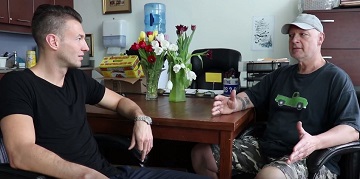
Anthony Sullivan with Hannes Tischhauser. Image from video.
This means that he never knows what he’s walking into. Some days are heavy on donations and others not. One morning it’s 75 lbs of bruised tomatoes on the vine and the next it’s eight bunches of over handled, sad kale and seven close-dated tubs of babaganooj. It’s really all over the place.
It’s a real credit to his industriousness and creativity as a chef that he can manage his program so consistently with such a fluctuation in quantity and variety of ingredients.
On the day we spent with Hannes our donation was, coincidently,on the larger side. (This wasn’t a set up for the camera. Our extremely diligent produce manager had just returned from holiday to find his assistant was not as demanding with his quality check as he would have hoped.) We had an abundance of soft, browning mushrooms, boxes of bruised cauliflower heads and various hard fruits with minor nicks and bruises.
 Immediately upon meeting Hannes in our backroom he started his planning out loud . . . “Steamed cauliflower! Mushroom soup! Chicken curry!” he planned aloud. It had only been three minutes and the pile of “garbage” in front of us had already started its transformation into something nobler.
Immediately upon meeting Hannes in our backroom he started his planning out loud . . . “Steamed cauliflower! Mushroom soup! Chicken curry!” he planned aloud. It had only been three minutes and the pile of “garbage” in front of us had already started its transformation into something nobler.
From our backroom Hannes packs his own car with the boxes of donation and brings them to his kitchen at the More than A Roof building on Seymour street and Drake just outside of Yaletown. The food is sorted by Hannes, Hannah and their volunteers and preparations begin for service later that evening.
I’m not half bad in the kitchen and through years of working preparing salads or steaks in various departments in our store, am comfortable with a knife. So, they put me to work breaking down kale stalks and cauliflower heads. It seemed like we had just begun when Hannes was showing off nearly completed pots of soup, curry and pork loin schnitzel. The man is efficient.
This might make him blush, but it’s worth noting the change in persona I witnessed on my day with Hannes. On the mornings we see each other in my store, Hannes comes across as a quietly polite philanthropist, humbly accepting whatever donations might have come his way. We’ve even gone to dinner once or twice and the same soft-spoken man is usually present at the table.
But in the kitchen, I witnessed something different entirely. I saw a broad-shouldered confident kitchen manager, offering direction, encouragement and boisterous energy. He was direct and assertive with both his assistant Hannah and the volunteers, and he leapt into the morning’s tasks with vigor and determination. This was a man in his element.
It’s with the demonstration of the alternative persona that I saw the real value of Soulkitchen. It’s not just about food and nutrition. It’s about building character, teaching skills and creating disciplined contributors. This chef was putting the same demands onto his volunteers as they might experience in a commercial kitchen; he wasn’t handling them with kid gloves and was in so doing telling them that they were competent and capable of achieving the goals he was setting out for them. All of this was done in an environment that remained full of encouragement, positivity and a genuine sense of community.
Now that chef’s head will no longer fit through the door frame into his kitchen, I’d better move on . . .
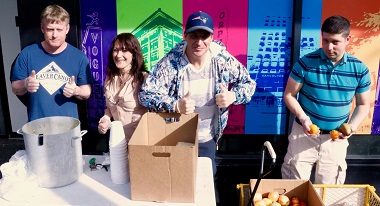
Some of the Soulkitchen team, on the street.
Once the food was prepped, the soup was loaded onto a cart and we were off for the outreach programs destination at a Single Room Occupancy (SRO) on Granville Street largely underserved by other organizations targeting the Downtown Eastside. By the time we arrived at 5:45 there were already some 40 – 60 people in line waiting for the team of volunteers delivering Soulkitchen’s soup.
Two things struck me. First was the number of eager people waiting for food. Second was how pleasant and kind everyone was to each other in that situation. I’ll be entirely honest, as a retailer in the downtown core where theft is an endemic problem, my relationship with the homeless or drug addicted hasn’t been the most cordial. We’ve been at loggerheads since our doors opened a decade ago.
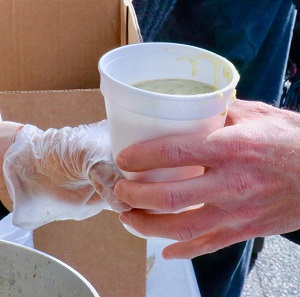 That much conflict has had a numbing effect on me, a fact I’ve grappled with for some time. But to see so many people I recognized in that lineup in real need and being as grateful as they were, was a meaningfully humanizing experience that I sorely needed. I am certainly a more compassionate man for having shared in this experience.
That much conflict has had a numbing effect on me, a fact I’ve grappled with for some time. But to see so many people I recognized in that lineup in real need and being as grateful as they were, was a meaningfully humanizing experience that I sorely needed. I am certainly a more compassionate man for having shared in this experience.
To wrap up my day with the team, I was invited for dinner with the More Than A Roof community that houses Soulkitchen’s workspace and constitutes his volunteer base. It was here that I met some 40 people partaking in the meals service, all of whom had varied backgrounds, past careers and genuine hospitality.
One man spoke an incredible eight languages, another was a forensic accountant in a previous life and another held a passion for photography and hosting parties for loved ones. All around, they were an interesting, warm bunch who seemed to be down on their luck or were dealing with more serious issues than my brief interactions would introduce me to.
In short, I was glad BC Housing was able to offer these good people a safe place to sleep and services to help them get their lives back on track. They deserved that, and much more.
I think it’s clear that my day With Soulkitchen was impactful. if this story has spoken to you and you’d like to participate in their good works directly please follow the directions below to donate or get in touch with me through this blog, or with Hannes through his website at https://soulkitchenworks.com/.
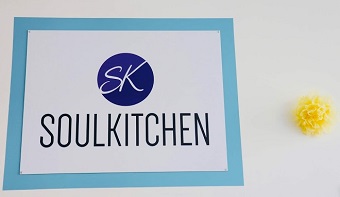 To donate to the work of Soulkitchen follow these steps:
To donate to the work of Soulkitchen follow these steps:
1.Visit www.canadahelps.org
Click on the “Donate” button on the top left corner of the page.
2.Using the search option enter “More Than A Roof” as the charity name. This is the registered charity partnering with Soulkitchen to distribute food.
3.Once “More Than A Roof”appears on the list; click on their name. You will be taken to their profile page.
4.Choose “Donate to This Charity Now” at the bottom of the screen.
5.Using the drop down menu titled “Apply your donation to specific fund” find ‘Soulkitchen’ on the list and click that option.
6.Follow the payment details.
7.You can choose to receive your tax receipt in a multiple of methods at this time.
Thank you for your gift!
This comment is re-posted by permission from Anthony Sullivan’s Roots and Grain blog. The photos with the article accompanied the original story.
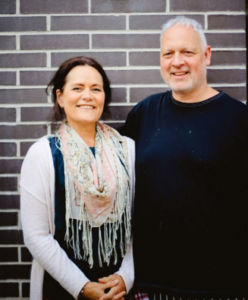
Louise and Hannes Tischhauser were pastors who worked with the disadvantaged in Perth, Australia before they came to Vancouver to establish Soulkitchen in 2010.
For more on Soulkitchen, go to their website. Here is a portion of their vision statement:
Our vision for Vancouver is to use the resources that we have been given to service the needs of the poor and lonely in the downtown area of Vancouver.
We prepare food out of a commercial kitchen in a social housing building and are able to serve, not only the tenants of the More Than a Roof housing group, but also other apartment blocks and on the street.
We are training our tenants, not only in kitchen skills, but also creating teams of tenants to serve others. We see this as a fabulous tool and part of their recovery process, giving dignity and leadership opportunities back within their reach. We have many examples of healing that happens when, amidst our own brokenness we give out to others in need.

Soulkitchen works out of Karis Place on Seymour Street.
The vision of More Than A Roof “is to be a foremost leader in the world of non-profit social housing by bringing an intentional community building approach of housing, care and more. . . . We value our Christian faith as an integral part of all we do. Our faith serves as an inexhaustible spiritual resource and motivation to provide affordable housing for people regardless of their race, religion, age, cultural background or physical capabilities.”
More Than A Roof operates six communities in Vancouver, including Karis Place (with 105 studio apartments for singles), which was mentioned in this story. They also run several other communities throughout BC. More Than A Roof was founded by Mennonite Central Committee BC in 1984, but became a separate society in 2003.

Very cool. Thanks for being a light and blessing.